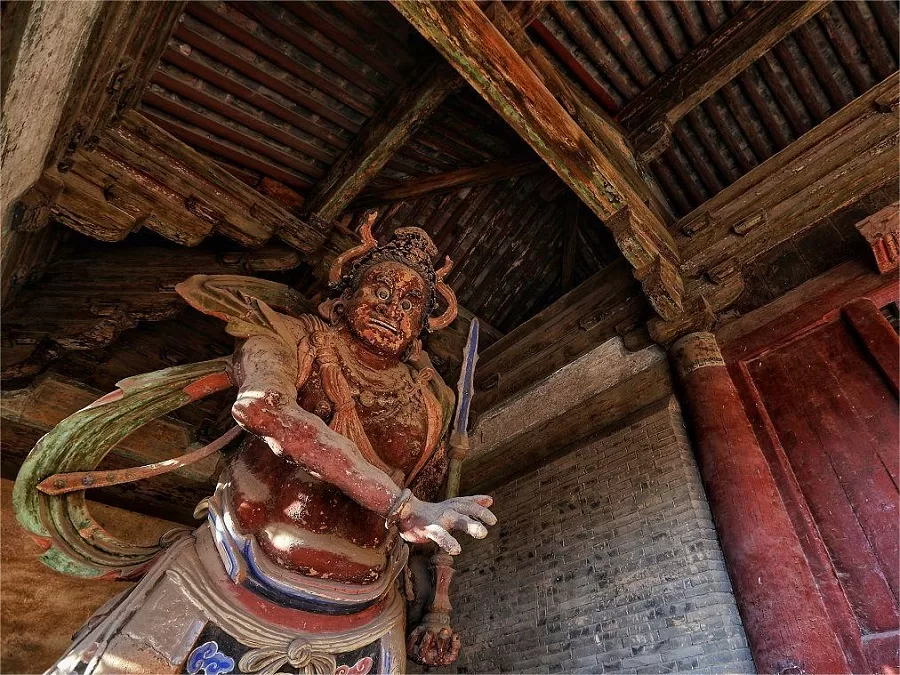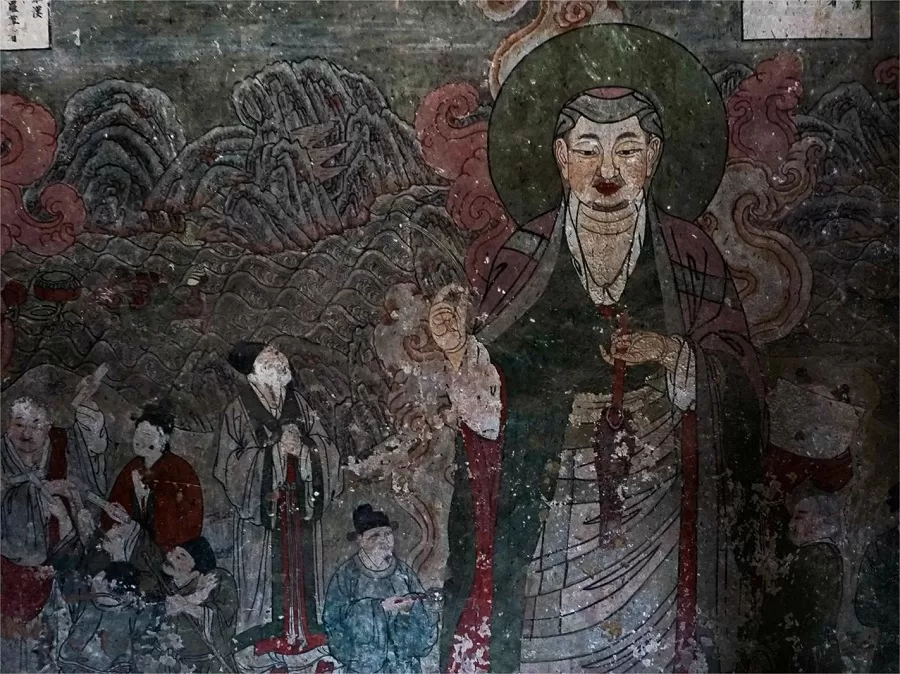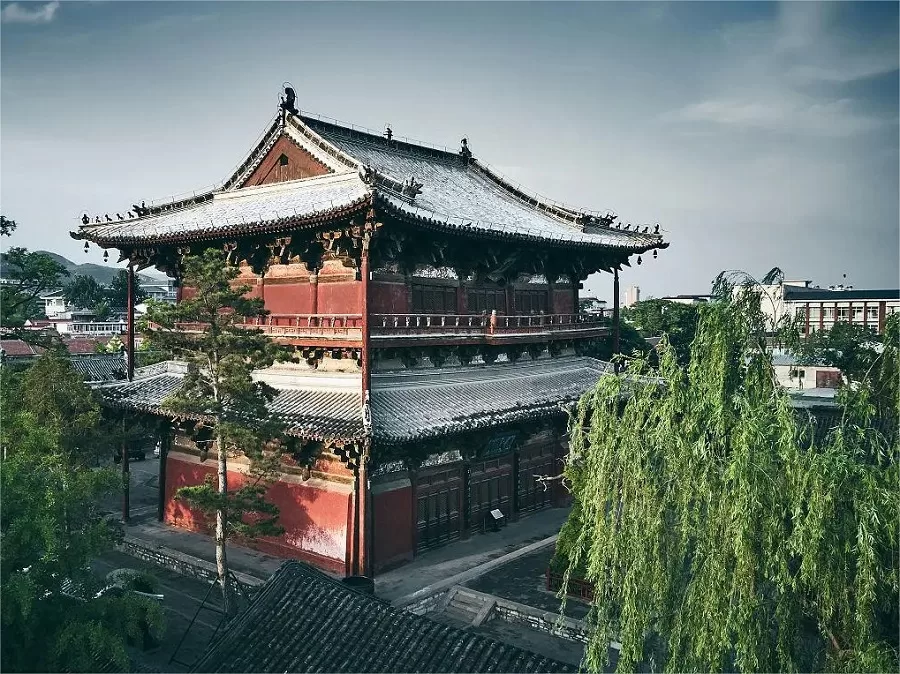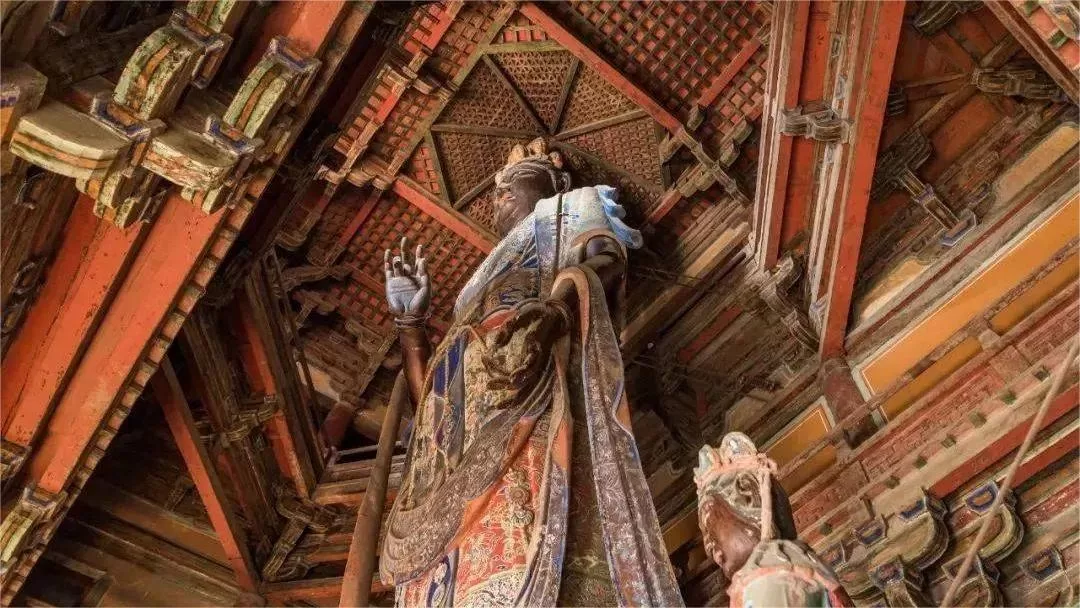Dule Temple (独乐寺), also known as Dafo Temple (大佛寺), is a historic Buddhist temple located in Jizhou District, Tianjin, China. It is one of the three remaining Liao Dynasty temples in China and stands as one of the country’s renowned ancient architectural wonders. Although the exact origins of Dule Temple are shrouded in mystery, its earlist historical record can be traced back to the 10th year of the Zhenguan era (636 AD).
Covering a total area of 16,000 square meters, Dule Temple boasts two of its oldest surviving structures – the Shanmen (mountain gate) and the Guanyin Ge (Guanyin Pavilion), both reconstructed in the year 984 AD. In 1930, the temple gained widespread recognition internationally after being investigated and publicized by Japanese scholar Sekino Tadashi and Chinese scholar Liang Sicheng.
The name “Dule Temple” has three possible explanations. One theory suggests that it derives from the large pear tree (known as “Du Li” in Chinese) that served as the internal support for the Guanyin statue. Another theory associates the name with the Buddhist principles of inner peace and contentment, emphasizing the temple’s dedication to bringing joy through universal salvation. The third theory connects the name to An Lushan, a military commander who rebelled against the Tang Dynasty, as he supposedly named it “Dule” to signify his solitary pursuit of pleasure, distinct from the happiness of the common people.
Table of Contents
- Basic Information
- Location and Transportation
- Highlights of Dule temple
- Vlog about Dule Temple
- Useful Tips Summarized from Reviews
- Other Attractions in Jizhou District
Basic Information
| Estimated Length of Tour | About 2 hours |
| Ticket Price | 33 RMB |
| Opening Hours | 8.00 – 18.00 (1st May – 1st October) 8.00 – 17.30 (2nd October – 30th April) |
| Telephone Number | 0086-022-29142904 |
Location and Transportation
Dule Temple is located in Jizhou District, which is part of Tianjin Municipality in northeastern China. Jizhou District is situated approximately 114 kilometers north of Tianjin city center.
The temple is nestled in the eastern outskirts of Jizhou District, surrounded by picturesque countryside and rolling hills. Its serene location adds to the spiritual ambiance and tranquility that visitors experience when they visit the temple.
To get to the Dule Temple, visitors can first take a high-speed train from Tianjin North Station and then transfer to a taxi to cover the remaining 3 kilometers. This should be the most cost-effective and time-saving choice.
Timetable of the Train:
| Train No. | Departure | Attrival | Duration | Cost |
| S910 | 12.23 | 14.14 | 1 hour and 51 minutes | 16.5 RMB |
| S916 | 18.10 | 20.02 | 1 hour and 52 minutes | 16.5 RMB |
| S918 | 19.08 | 21.02 | 1 hour and 54 minutes | 16.5 RMB |
Highlights of Dule temple
Guanyin Pavilion

The main structure of Dule Temple is the Guanyin Pavilion, a three-story wooden building standing at a height of 23 meters. At the central pedestal sits a 16-meter-high clay sculpture of Guanyin Bodhisattva, also known as the “Eleven-faced Guanyin” due to the ten small Guanyin images on the main figure’s head. The sculpture exudes a serene and benevolent expression, with a slightly forward-leaning posture, resembling motion in stillness. Flanking the Guanyin statue are two original Liao Dynasty clay sculptures of attendant Bodhisattvas. Despite being crafted during the Liao Dynasty, their artistic style bears a resemblance to works from the prosperous Tang Dynasty, making them among the largest extant clay Buddhist statues in China.
Shanmen (Mountain Gate)

Dule Temple’s Shanmen is the earliest extant Wudian-roofed mountain gate in China. With a width of three bays and a depth of two bays, it features vivid and ancient chimeras at the ends of the main ridge. In the front bays, there are two colored clay statues of Vajrapani from the Liao Dynasty, commonly known as the “Hum” and “Ha” generals. The rear bays showcase colorful murals depicting the “Four Heavenly Kings,” painted during the Qing Dynasty. The beams and columns of the Shanmen are robust, and the brackets and purlins are imposing. Legend has it that the plaque for the Shanmen was inscribed by Yan Song, a well-known corrupted high-ranking official in Ming dynasty.
Captivating Murals

Dule Temple in Tianjin is adorned with vibrant and captivating murals that showcase the rich artistic heritage of ancient China. These murals, painted on the walls of Guanyin Pavilion and Mountian Gate, were created during Ming dynasty and showcase landscapes, clouds, water, and secular subjects. The colors used in the murals are vibrant and eye-catching, while the attention to detail is remarkable. Each stroke of the brush tells a story and brings the temple to life. The murals not only serve as decorative elements but also serve as a medium for conveying Buddhist teachings and inspiring spiritual contemplation among visitors
Spring Festival Temple Fair

The Dule Temple Fair is a traditional folk cultural event representative of the eastern region of Beijing. Originating in the Ming Dynasty and reaching its peak during the Qing Dynasty, the fair has a history of several hundred years. It integrates folk art, local customs, and Buddhist culture, featuring grand events such as Emperor Qianlong’s worship ceremony, Buddhist rituals, and artistic performances. Traditional programs include Wuqiao acrobatics, folk flower exhibitions, local dramas, as well as traditional snacks like sugar figurines, finger-painting demonstrations, and snacks like big bowl tea and candied hawthorns. In 2009, it was designated as intangible cultural heritage in Tianjin.
Vlog about Dule Temple
Useful Tips Summarized from Reviews
Quiet and Serene Atmosphere: Dule Temple is a lesser-known temple with few tourists, providing a wonderful and tranquil experience. The presence of swallows flying low during light rain creates a harmonious ambiance that is surprisingly calming.
Convenient Parking: The temple offers a dedicated parking lot with ample capacity, making it very convenient for visitors.
Direction to White Pagoda Temple: After exploring Dule Temple, the exit is diagonally across from the entrance to the lane leading to Baita Temple. Simply follow the lane until you can see the White Pagoda, and you will have reached your destination.
Explore Surrounding Areas: The vicinity of the temple includes the most bustling ancient street in Jizhou District and Nanlou Pedestrian Street. There are also many local specialties worth trying, making it worthwhile to explore the nearby areas for both cultural and culinary experiences.





